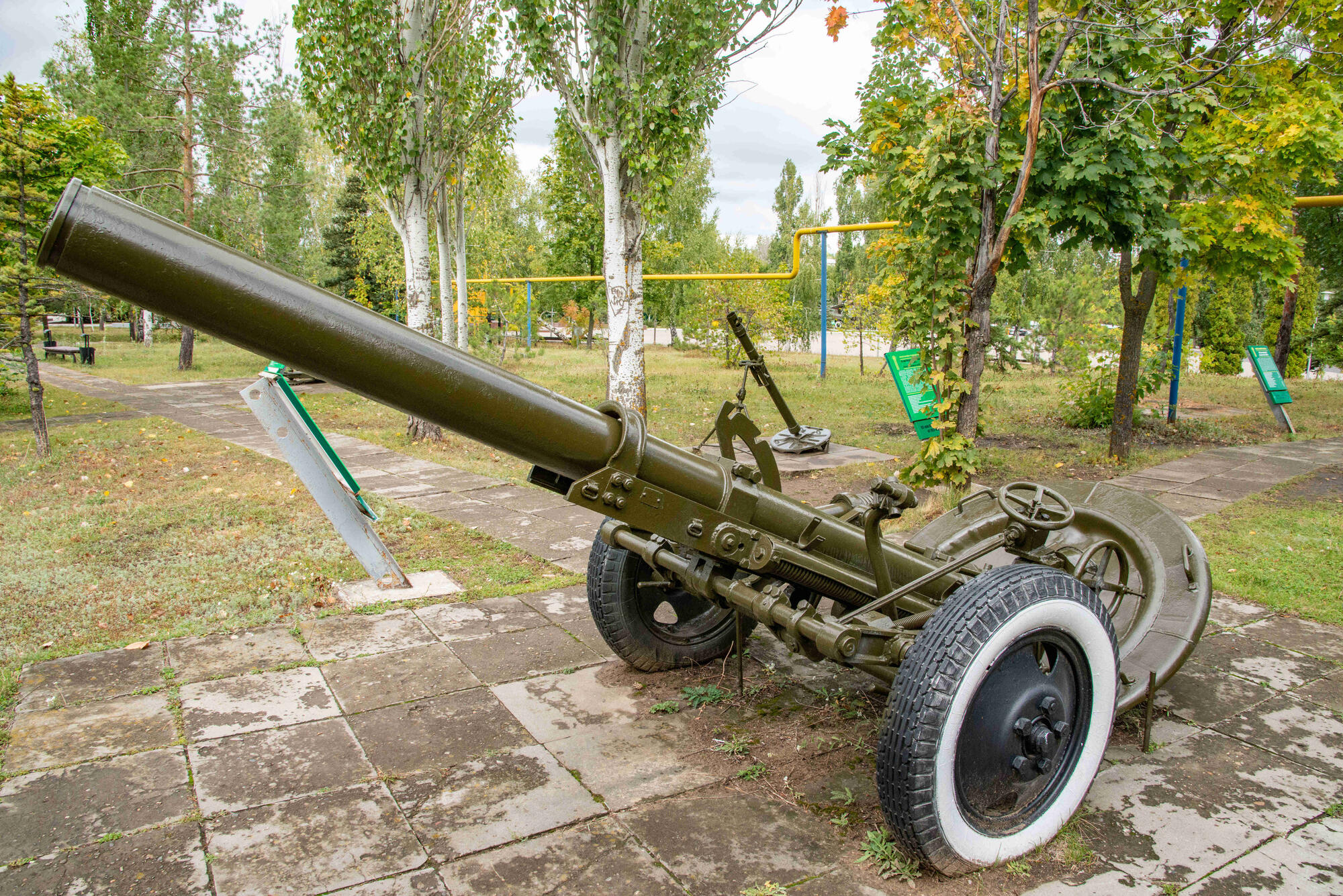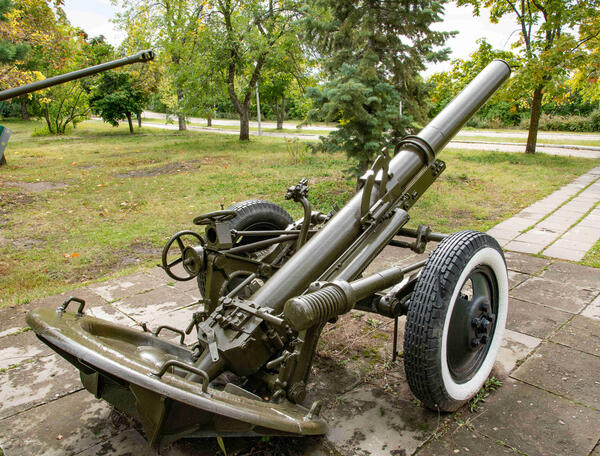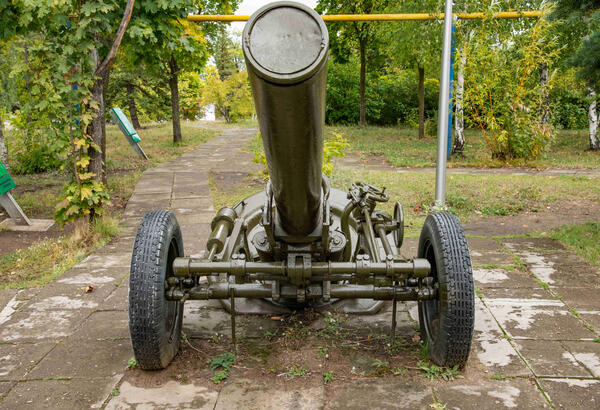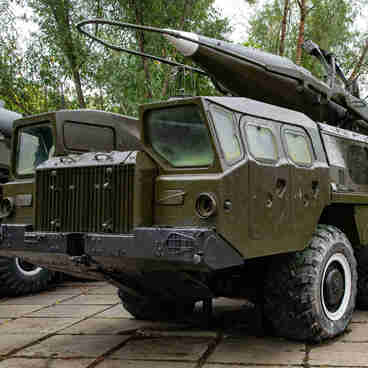The presented mortar of the 1943 model was developed by the design team under the leadership of Joseph Grigoryevich Teverovsky. The prototype was manufactured in the Urals with the participation of the designer Zinovy Zakharovich Gurevich. On January 17, 1944, the mortar entered service with the Red Army.
The MT-13 mortar was intended for engaging enemy manpower and firepower — mortar and artillery batteries — with plunging fire, as well as for destroying log pillboxes and stone and brick structures.
This smoothbore mortar had a rigid system and no counter-recoil mechanisms. It was mounted on a carriage. The fundamental difference between the MT-13 mortar bomb and all other domestic mortars was the short cartridge into which the mortar bomb stabilizer was inserted.
The cartridge was needed for obturation, that is preventing the powder gasses from leaking when firing. The mortar carriage also had an original design. It was a wheeled carriage with leaf spring suspension, which did not separate when firing. Turning, lifting and balancing mechanisms, the undercarriage, as well as sighting devices were assembled on the carriage.
Since 1944, heavy mortar brigades, which were part of the Breakthrough Artillery Divisions — the Reserve of the Supreme High Command, were equipped with these mortars. One brigade was made up of three battalions, each with 12 mortars.
The very first combat use of the 160mm mortars had a huge psychological effect on the enemy. The shots from the MT-13s were muffled, mortar bombs flew along a steep trajectory and fell almost vertically.
In the reviews from the front, it was noted that the 160mm mortar was an effective means of destroying all types of field fortifications and a reliable means of suppressing and destroying enemy artillery batteries. These weapons were successfully used in offensive operations of the Red Army until the very end of the war, and were widely used in street battles in large settlements.
At the time of its development, the MT-13 was the only mortar of this peculiar design and firepower in the world. In January 1944, Tula Machine-Building Plant No. 535 launched production of these mortars. By the end of 1944, 350 mortars were manufactured. In total, 1557 MT-13 mortars were manufactured in four years — until August 1947.
The MT-13 mortar was intended for engaging enemy manpower and firepower — mortar and artillery batteries — with plunging fire, as well as for destroying log pillboxes and stone and brick structures.
This smoothbore mortar had a rigid system and no counter-recoil mechanisms. It was mounted on a carriage. The fundamental difference between the MT-13 mortar bomb and all other domestic mortars was the short cartridge into which the mortar bomb stabilizer was inserted.
The cartridge was needed for obturation, that is preventing the powder gasses from leaking when firing. The mortar carriage also had an original design. It was a wheeled carriage with leaf spring suspension, which did not separate when firing. Turning, lifting and balancing mechanisms, the undercarriage, as well as sighting devices were assembled on the carriage.
Since 1944, heavy mortar brigades, which were part of the Breakthrough Artillery Divisions — the Reserve of the Supreme High Command, were equipped with these mortars. One brigade was made up of three battalions, each with 12 mortars.
The very first combat use of the 160mm mortars had a huge psychological effect on the enemy. The shots from the MT-13s were muffled, mortar bombs flew along a steep trajectory and fell almost vertically.
In the reviews from the front, it was noted that the 160mm mortar was an effective means of destroying all types of field fortifications and a reliable means of suppressing and destroying enemy artillery batteries. These weapons were successfully used in offensive operations of the Red Army until the very end of the war, and were widely used in street battles in large settlements.
At the time of its development, the MT-13 was the only mortar of this peculiar design and firepower in the world. In January 1944, Tula Machine-Building Plant No. 535 launched production of these mortars. By the end of 1944, 350 mortars were manufactured. In total, 1557 MT-13 mortars were manufactured in four years — until August 1947.




